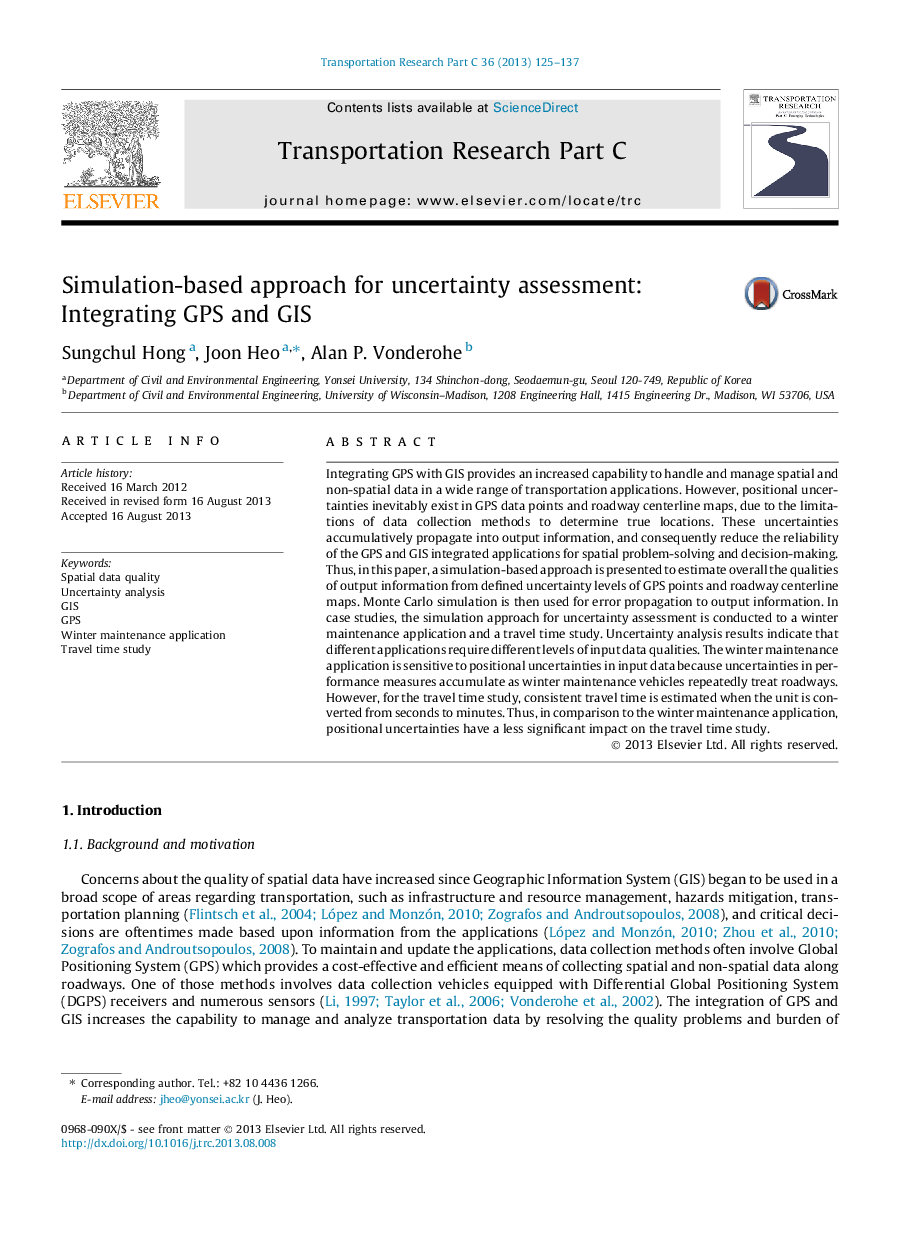| Article ID | Journal | Published Year | Pages | File Type |
|---|---|---|---|---|
| 6937249 | Transportation Research Part C: Emerging Technologies | 2013 | 13 Pages |
Abstract
Integrating GPS with GIS provides an increased capability to handle and manage spatial and non-spatial data in a wide range of transportation applications. However, positional uncertainties inevitably exist in GPS data points and roadway centerline maps, due to the limitations of data collection methods to determine true locations. These uncertainties accumulatively propagate into output information, and consequently reduce the reliability of the GPS and GIS integrated applications for spatial problem-solving and decision-making. Thus, in this paper, a simulation-based approach is presented to estimate overall the qualities of output information from defined uncertainty levels of GPS points and roadway centerline maps. Monte Carlo simulation is then used for error propagation to output information. In case studies, the simulation approach for uncertainty assessment is conducted to a winter maintenance application and a travel time study. Uncertainty analysis results indicate that different applications require different levels of input data qualities. The winter maintenance application is sensitive to positional uncertainties in input data because uncertainties in performance measures accumulate as winter maintenance vehicles repeatedly treat roadways. However, for the travel time study, consistent travel time is estimated when the unit is converted from seconds to minutes. Thus, in comparison to the winter maintenance application, positional uncertainties have a less significant impact on the travel time study.
Related Topics
Physical Sciences and Engineering
Computer Science
Computer Science Applications
Authors
Sungchul Hong, Joon Heo, Alan P. Vonderohe,
